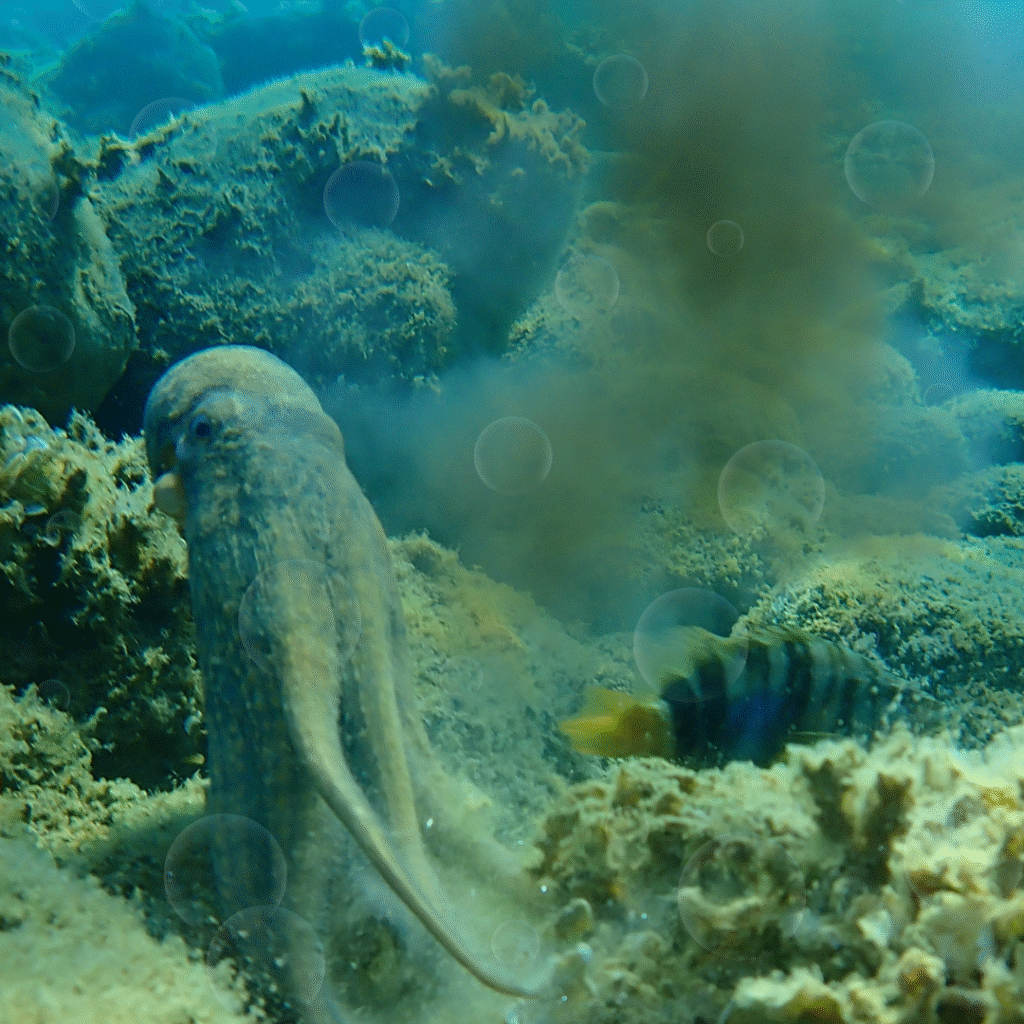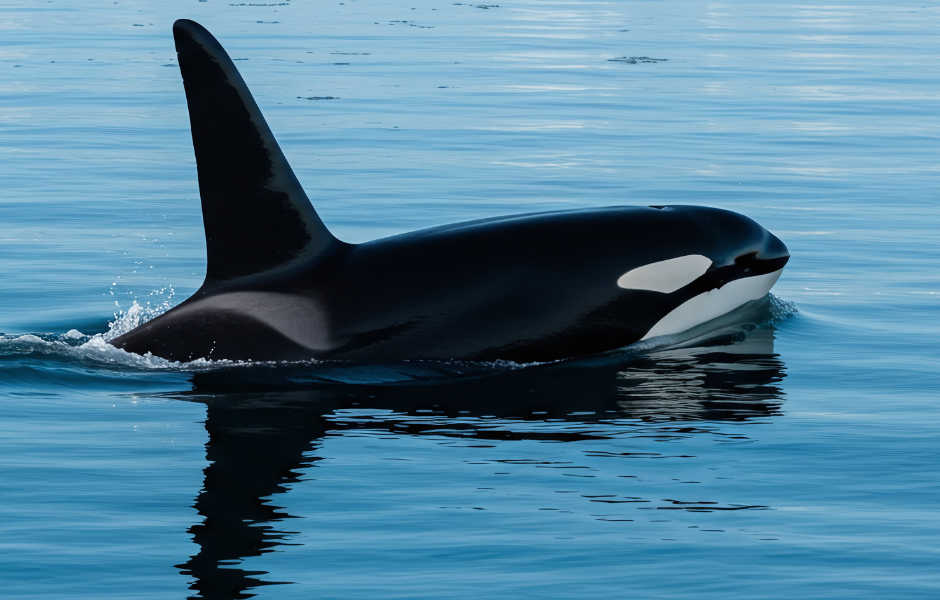
This children’s article, Octopuses: The ocean’s clever shape-shifters, has been written for native English speakers and learners of English as a second or foreign language. It helps children practise reading and comprehension, learn exciting vocabulary, and discover the wonders of the natural world. Written by Mark Pulley, a teacher and writer who creates fun and informative news articles for English learners.
What has three hearts, nine brains, and blue blood?
Say hello to the octopus, one of the strangest and smartest creatures in the sea!
With over 300 different species, octopuses live in nearly every part of the ocean. From warm coral reefs to freezing Arctic waters, these slippery animals have learned to survive in many different habitats. Many different underwater habitats that is, so don’t expect to see one in the forest or desert any time soon.
They’re masters of disguise and have some clever tricks to escape from dangerous predators. They’ve perfected their skills over millions of years. You won’t believe what they can do!
Hide and seek, octopus style
Octopuses have no bones, so they’re soft and squishy. That means they can squeeze into tiny cracks to hide. But that’s just the start.
They can also change the colour of their skin to match their surroundings. That’s right, they can make themselves look like rocks, seaweed, or sand in just a few seconds! They can even change their skin’s texture to make bumps and ridges, helping them blend in better.
Even if a predator manages to spot them, they shoot out a cloud of dark ink to make a quick getaway.

Why are octopuses so sneaky? Well, the problem is that many ocean animals, like sharks and dolphins, think octopuses are delicious. Without bones, they’re like a meaty snack, so they’ve had to get very good at hiding.
Three hearts, nine brains… wait, what?
An octopus’s body is like something from a science-fiction story. It has three hearts — two pump blood to the gills, and one pumps blood around the rest of the body.
Its blood is blue, not red, because it’s made with a different chemical that works better in cold, low-oxygen water.
And that’s not all. Octopuses also have nine brains! One big one in their head, and a smaller one in each arm. That means their arms can move and even taste things without needing to ‘ask’ the main brain first.
See for yourself how an octopus can change colour and shape by watching this video on YouTube.
Did you know?
- Octopuses can unscrew jar lids — they’re that smart!
- They can regrow an arm if they lose one.
- Some octopuses can walk across the sea floor on two arms!
- The giant Pacific octopus can grow as wide as a car!
Article vocabulary list
- Species – A group of living things that are of the same kind
- Coral reef – A colourful underwater home made by tiny animals
- Predator – An animal that hunts and eats other animals
- Disguise – Something that hides what you really are
- Texture – How something feels or looks on the outside
- Escape – To get away from danger
- Regrow – To grow again after being lost
Comprehension questions
Just click the plus (+) to see the answer
Where can octopuses live?
A) Only in warm water
B) Only in cold water
C) In many parts of the ocean
Answer: C) In many parts of the ocean
Why do octopuses shoot out ink?
A) To write messages
B) To swim faster
C) To escape from danger
Answer: C) To escape from danger
How do octopuses hide?
A) They turn invisible
B) They change colour and shape
C) They hide behind rocks
Answer: B) They change colour and shape
4. What colour is an octopus’s blood?
A) Red
B) Blue
C) Green
Answer: B) Blue
5. How many brains does an octopus have?
A) One
B) Two
C) Nine
Answer: C) Nine

Mark is a writer and EFL teacher from England with eight years’ experience. He’s passionate about travel, sport (especially football), animals, nature, and history, and enjoys helping children explore the world through language and learning.




